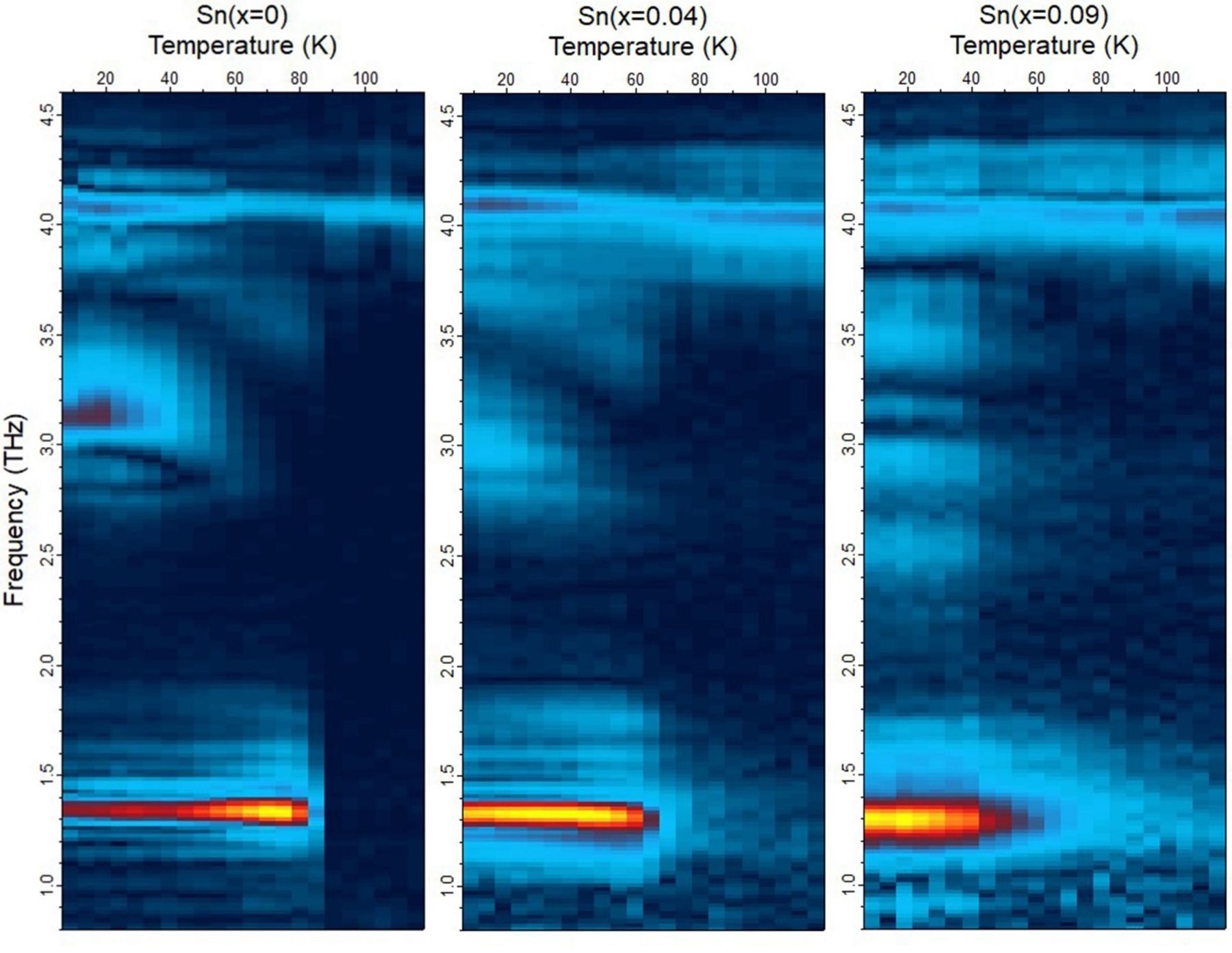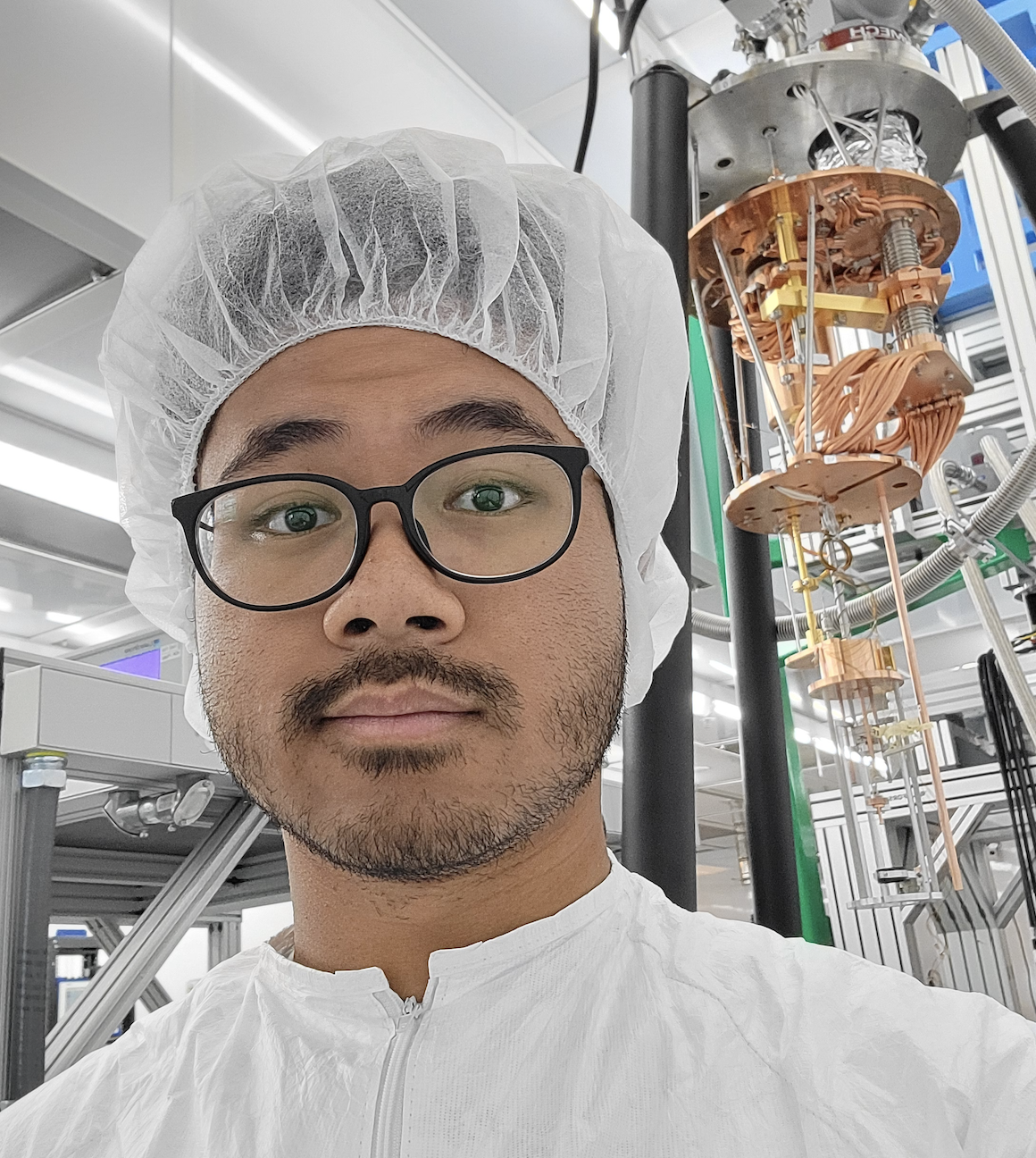
Coherent phonon spectroscopy of CsV3Sb5−xSnx
The kagome superconductor CsV3Sb5 is an excellent system for exploring the influence of chemical composition on charge order and other electronic instabilities. In this material, vanadium atoms form two-dimensional planes resembling the Japanese kagome basket weaving pattern, which is known to lead to interesting features in its electronic band structure. In a charge density wave (CDW) state below 94 K, the kagome structure distorts such that the bond distances between vanadium atoms are lengthened or shortened, forming so-called trihexagonal or Star of David structures [1]. The introduction of holes (the absence of electrons) via tin doping suppresses the CDW state and enhances superconductivity [2].
Here, we use coherent phonon spectroscopy (CPS) experiments to track the phonon modes in CsV3Sb5−xSnx as a function of temperature and chemical composition x. In CPS, an ultrafast laser pulse instantaneously photoexcites electrons in a sample. The excited electrons subsequently relax by coupling to phonons, starting a coherent oscillation of the atoms in the crystal. A probe laser pulse is then used to measure the reflectance of the sample. This process yields reflectance as a function of the time delay between the pump and probe pulses. Subtraction of the electronic recovery leaves reflectance oscillations that are Fourier transformed to extract phonon frequencies and lifetimes. Performing this experiment over a range of temperatures allows one to probe the phonons as a function of temperature, as shown in the Figure above. Here, the chosen doping levels are x = 0 (undoped), x = 0.04 (approximately where the CDW transition is suppressed), and x = 0.09 (well into the suppressed region). Three phonon modes are revealed by the data: α (1.3 THz), β (3.1 THz), and γ (4.1 THz). The γ mode is an out-of-plane breathing mode and is always active, even when the crystal structure is undistorted. The α mode, however, appears abruptly below the CDW transition. First-principles calculations show that this phonon exists at the L point in reciprocal space [3]. By symmetry, this mode is forbidden in CPS, but the spontaneous breaking of interlayer symmetry in the CDW state causes the Brillouin zone to fold inward and bring the L point onto the Γ point. This process makes the L phonon mode fully symmetric, and thus observable in CPS. Another interesting feature of the α mode is that in the undoped sample, this mode abruptly turns on, signaling the spontaneous symmetry breaking associated with the CDW phase [3]. In the higher doped samples, however, there is a more gradual transition as temperature is lowered. Finally, the β mode is also very interesting because its frequency matches that of the amplitude mode reported in the literatures [4,5]. As x increases, this mode softens (decreases in frequency) and broadens noticeably, until the mode is completely replaced by a new set of modes for x = 0.09. This observation is consistent with the decreasing stability of the CDW state following tin doping.

In conclusion, we used CPS to reveal the evolution of phonons with doping in the CsV3Sb5-xSnx system. We find that the modes directly related to the CDW phase, namely α and β, evolve dramatically with tin composition x. The observations at the highest doping level may be related to an incommensurate charge order that seems to exist at high tin compositions (up to x = 0.2), but more experiments are required to explore trends at higher doping levels.
References
[1] Kautzsch, Ortiz, Mallayya, Plumb, Pokharel, Ruff, Islam, Kim, Seshadri and Wilson, Phys. Rev. Mater. 7 (2023) 024806.
[2] Oey, Ortiz, Kaboudvand, Frassineti, Garcia, Cong, Sanna, Mitrovic, Seshadri and Wilson, Phys. Rev. Mater. 6 (2022) L041801.
[3] Ratcliff, Hallett, Ortiz, Wilson, and Harter, Phys. Rev. Mater. 5 (2021) L111801.
[4] Liu, Ma, He, Li, Tan, Liu, Xu, Tang, Watanabe, Taniguchi, Gao, Dai, Wen, Yan, and Xi, Nat. Commun. 13 (2022) 3461.
[5] He, Peis, Cuddy, Zhao, Li, Zhang, Stumberger, Moritz, Yang, Gao, Devereaux, and Hackl, Nat. Commun. 15 (2024) 1895.